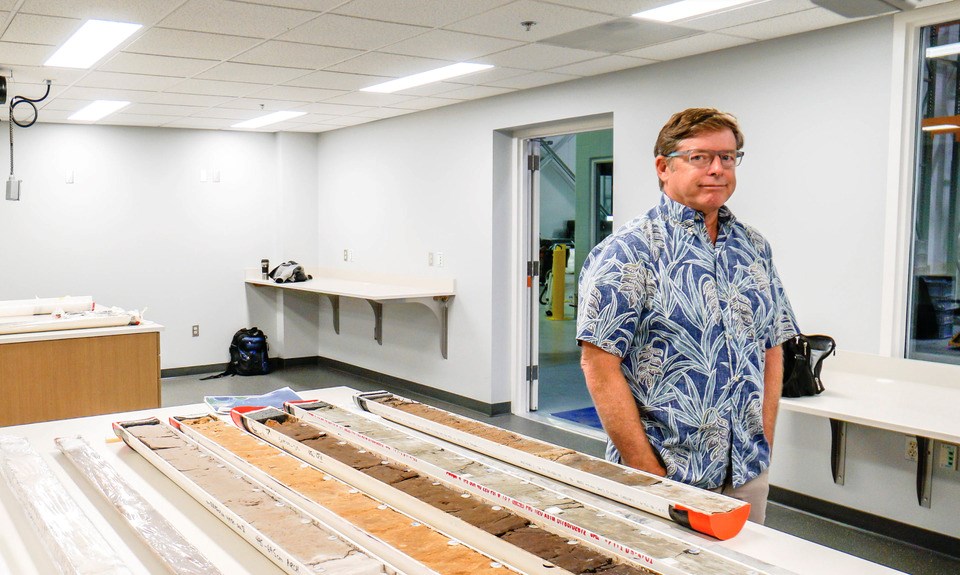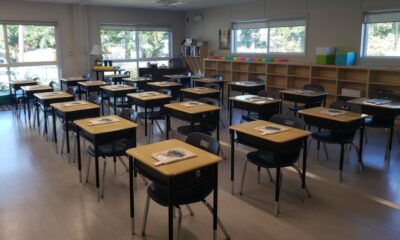World
Scientists Discover Evidence of Simultaneous Earthquakes Along West Coast

Recent research has revealed significant evidence of simultaneous earthquakes occurring along the west coast of North America, specifically from British Columbia to California. This groundbreaking study, published in the journal Geophysical Research Letters, suggests a potential link between the Cascadia Subduction Zone and the San Andreas Fault, raising concerns about the implications for disaster response and insurance models.
The findings indicate that the two geological fault lines may not function independently, as previously believed. The possibility of simultaneous seismic events could lead to catastrophic consequences for densely populated areas in both regions. Researchers warn that a major earthquake in one area could trigger another in the other, dramatically increasing the risk of widespread devastation.
In the study, scientists analyzed seismic data over a period of years. They discovered patterns that suggest a complex interaction between the two fault lines. This interaction could mean that traditional models, which assess earthquake risks independently, may need to be reevaluated. Dr. Sarah Johnson, a lead researcher at the Earthquake Research Institute, emphasized the urgency of updating disaster preparedness protocols.
The implications of these findings extend beyond academic circles. Insurance companies, tasked with assessing risk and setting premiums, may find their models outdated if simultaneous earthquakes become a recognized threat. As Dr. Emily Chen, a seismologist at the University of California, noted, “The potential for two major earthquakes occurring at the same time could overwhelm disaster response capabilities and financial resources.”
Experts are urging for immediate action from policymakers to address these risks. Communities along the west coast need to take into account the interconnected nature of seismic hazards. Dr. Chen suggests enhancing public awareness about earthquake preparedness and revising building codes to ensure structures can withstand possible dual-quake scenarios.
Further studies are planned to investigate the mechanisms behind these potential simultaneous earthquakes. Understanding the dynamics could help scientists predict future seismic activity more accurately. The research community is hopeful that continued investigation will yield better insights into earthquake risks, ultimately aiding in the protection of lives and property.
As scientists continue to explore the complex relationship between the Cascadia and San Andreas fault systems, the need for a coordinated approach to disaster management is becoming increasingly apparent. The findings from this research not only challenge existing assumptions about earthquake risks but also call for a reevaluation of how communities, governments, and insurance companies prepare for potential natural disasters.
In summary, the discovery of evidence linking the Cascadia Subduction Zone and the San Andreas Fault underscores a critical need for updated risk assessments and disaster preparedness strategies. As the understanding of seismic interactions evolves, so too must the responses to the challenges posed by these natural phenomena.
-

 Politics4 weeks ago
Politics4 weeks agoSecwepemc First Nation Seeks Aboriginal Title Over Kamloops Area
-

 World5 months ago
World5 months agoScientists Unearth Ancient Antarctic Ice to Unlock Climate Secrets
-

 Entertainment5 months ago
Entertainment5 months agoTrump and McCormick to Announce $70 Billion Energy Investments
-

 Science5 months ago
Science5 months agoFour Astronauts Return to Earth After International Space Station Mission
-

 Lifestyle5 months ago
Lifestyle5 months agoTransLink Launches Food Truck Program to Boost Revenue in Vancouver
-

 Technology3 months ago
Technology3 months agoApple Notes Enhances Functionality with Markdown Support in macOS 26
-

 Lifestyle3 months ago
Lifestyle3 months agoManitoba’s Burger Champion Shines Again Amid Dining Innovations
-

 Top Stories2 months ago
Top Stories2 months agoUrgent Update: Fatal Crash on Highway 99 Claims Life of Pitt Meadows Man
-

 Politics4 months ago
Politics4 months agoUkrainian Tennis Star Elina Svitolina Faces Death Threats Online
-

 Sports5 months ago
Sports5 months agoSearch Underway for Missing Hunter Amid Hokkaido Bear Emergency
-

 Politics5 months ago
Politics5 months agoCarney Engages First Nations Leaders at Development Law Summit
-

 Technology5 months ago
Technology5 months agoFrosthaven Launches Early Access on July 31, 2025





















